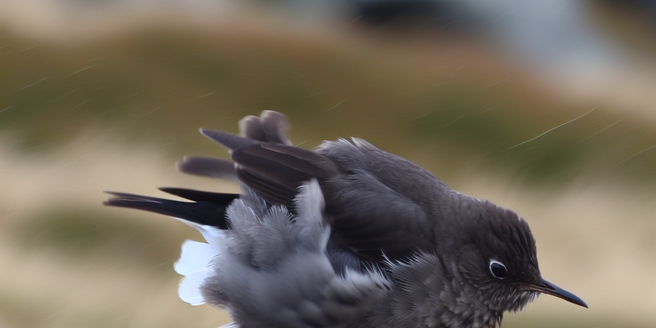
Understanding the Basics: What is a Cold Front?
A cold front is a complex meteorological event where colder air pushes beneath a warmer air layer, forming a distinctive atmospheric boundary between two temperature zones. This event, which often causes a significant drop in temperature and change in weather patterns, has far-reaching effects on our natural ecosystems.
These effects are particularly visible in animal behaviors—such as hibernation, migration, and food collection patterns. Animals adapt in various ways to survive these climatic shifts, for example, entering hibernation to conserve energy during winter or adjusting their feeding and reproduction schedules according to weather changes.
Therefore, studying cold fronts— their formation, characteristics, frequency, and behavior— can enhance our understanding of their influence on animal life. By monitoring these weather changes, we can identify patterns in animals’ behavioral responses and changes in their usual habits. These findings may deepen our knowledge of the intricate relationship between climatic changes and animal behavior.
In conclusion, understanding cold fronts and their significant effects on the natural environment, particularly animal behavior, is crucial. This interdisciplinary field combines meteorology and animal biology to yield important insights for ecological conservation and a broader understanding of our planet’s complex climate systems.
The Relationship Between Cold Fronts and Climate Change
Cold fronts, while primarily acknowledged as mere weather changes, hold potential for highly significant impacts, particularly amidst climate change. These natural phenomena can influence weather on a large scale and with climate change, their typical frequency and intensity may alter considerably, causing ecological changes. For instance, their impact on animal hibernation behavior might cause shifts in hibernation patterns, affecting the survival rates of species that depend on specific hibernation cycles. Changes in the timing and length of hibernation can alter availability to food and fat supplies, increasing the survival risk. Notably, these changes can disrupt the balance within whole ecosystems due to the intertwined interactions between organisms and their environments. Any change can trigger a domino effect on all creatures and plants within an ecosystem. Consequently, continuous study of these phenomena and their impacts is essential in the context of our changing climate.
Hibernation Patterns: A Detailed Overview
Hibernation, a seasonal dormancy prominently seen in the animal kingdom, is primarily driven by various influential factors like climate variations, dietary intake, and access to shelter. Among these, ambient weather conditions play a significant part in the onset and duration of hibernation. This survival mechanism gets engaged by a multitude of animal species during periods of environmental threats or limited resources. The extremity of winter weather can often trigger these conditions, compelling creatures like bats, bears, and certain insects to enter a long-term state of inactivity, helping them persevere through prolonged periods of adverse atmospheric changes. These harsh conditions, particularly low-pressure cold fronts, can severely reduce food sources and endanger animals’ lives, underlining the necessity for energy conservation through hibernation. Weather conditions thus heavily influence the timing, duration, and emergence of hibernating animals, exemplifying a splendid evolutionary adaptation highlighting the intimate relationship between animal behavior and our planet’s rhythmic climatic changes.
How Cold Fronts Impact Hibernation Behaviors
When faced with a cold front, animals may hibernate earlier or longer to cope with freezing temperatures, a commonly observed survival strategy across the animal kingdom. Such changes influence their overall fitness, survival rates, and potentially reproductive cycles, being they often coincide with mating seasons. These adaptations may impact the larger ecological community through altering species distribution and affecting biodiversity. Therefore, animals’ individual adaptations during winters can influence their ecosystems significantly and have effects far beyond the individual level on the interconnected ecological community.
Case Studies: Effects of Cold Fronts on Different Hibernating Species
Case studies on various species such as brown bears, bats, and ground squirrels have revealed the deep impact of weather changes, particularly cold fronts, on their hibernation patterns. It’s intriguing to study how a sharp drop in temperature can affect these animals’ hibernation habits, thereby modifying their actions. The research identifies how cold fronts can provoke changes in the inception of hibernation. Weather patterns appear to largely influence the commencement of hibernation, with cold fronts potentially prompting animals to hibernate earlier than usual. This indicates that an animal’s readiness for hibernation isn’t solely governed by their biological clock but also influenced by surrounding climate changes. Besides triggering the start of hibernation, these cold fronts also significantly impact the animals’ energy reserves. Animals rely heavily on their stored fat during hibernation. Yet, early or prolonged hibernation triggered by a cold front might cause higher energy expenditure, potentially affecting their survival post hibernation. It’s thus clear that cold fronts have a crucial and complex role in the lifecycles of these species, also affecting their energy reserves. The thorough findings from these studies are key to understanding these species’ survival mechanisms and how external weather patterns influence them.
